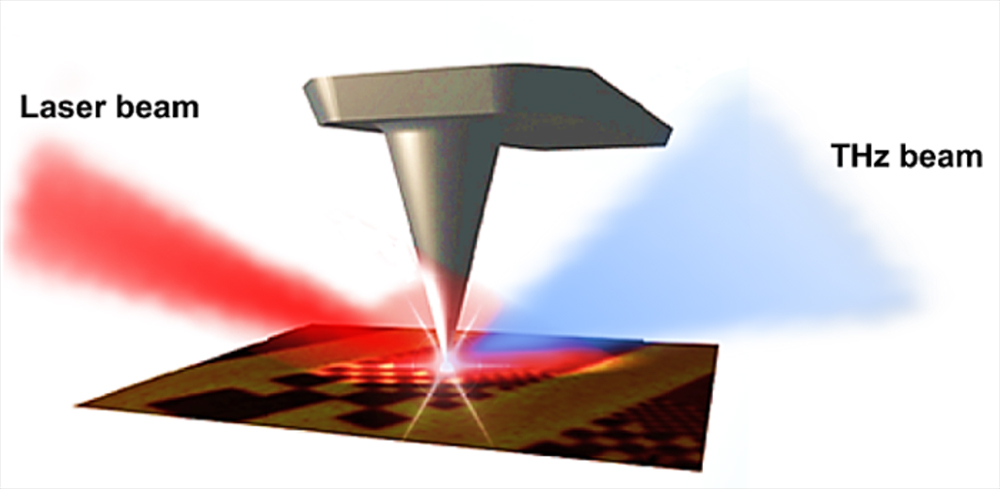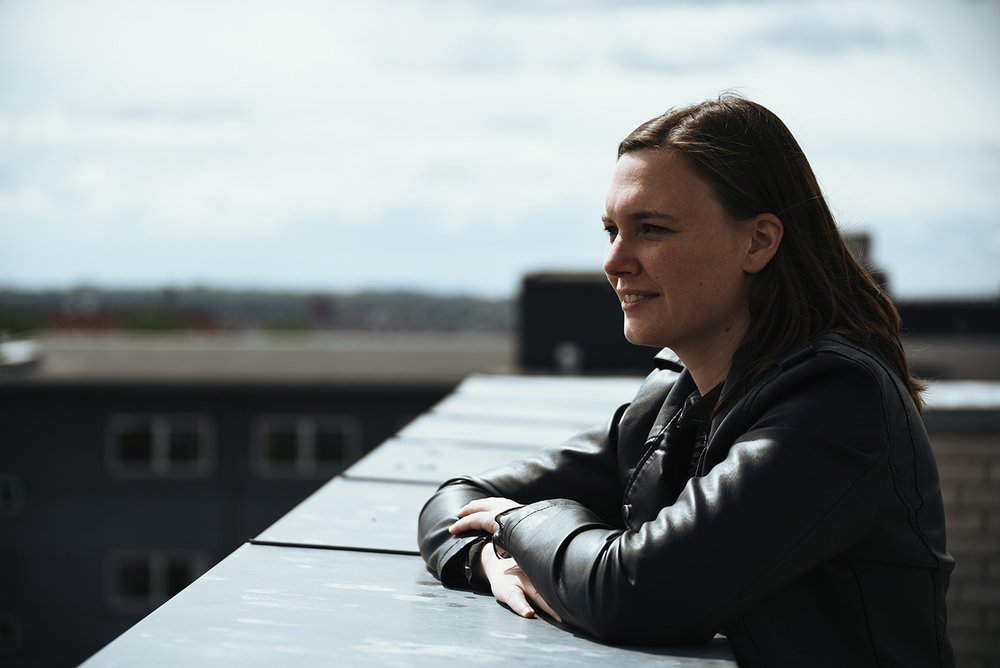Terahertz: New researcher paves the way for special light technology at Aarhus University
Pernille Klarskov Pedersen is a new assistant professor on the photonics line at the Department of Engineering at Aarhus University where, among other things, she will conduct research into the solar cells of the future.

For decades, electronic circuits have been getting smaller and smaller and faster and faster, and the question is approaching as to whether there is a lower limit for how small the technology can be and still function. That is precisely what 32-year-old Pernille Klarskov Pedersen will be researching in her photonics laboratory at the Department of Engineering on Finlandsgade in Aarhus.
Via an advanced technology called terahertz light, she can physically visualize conductivity. She can actually see how good a circuit is at directing current, by illuminating the circuit with light at terahertz wavelengths.
"Terahertz technology is one of the only ways you can visually see the current flow in a circuit, because this kind of light has a wavelength that interacts with electrons. You can use this technology to see whether there actually is a current, whether the current is flowing smoothly, and whether the current is flowing in the right direction, and you can do this without touching the sample. This makes it a great way to understand how things work," says Assistant Professor Pernille Klarskov Pedersen.
ALSO READ: Researchers transform carbon dioxide into green super gas
She emphasises that the technology is still at the research stage and not very widespread. The technique is rather specialised, particularly because the wavelengths are actually far too large to use under the microscopic conditions relevant for present and future electronic circuits.
(Article continues below the picture)

Therefore, she has built special equipment that makes it possible to use terahertz-wavelength light sources to interact with the electron flow in a current.
"Regardless of wavelength, light sources 'settle' under sharp metallic objects, for example a needle. By shining a light on the needle and letting the needle run for a few nanometres over the surface of a circuit, I can use the technique to make terahertz near-field images. All electronics are low-frequency compared with light, but by using very low-frequency light, the light and electrons in the current can "talk", because their wavelengths match. This makes it possible to visually actually light up conductivity," she says.
ALSO READ: New associate professor will raise Danish drone research to new heights
Pernille is currently in the process of setting up the photonics laboratory, and she has just been awarded research funding from Aarhus University Research Foundation to use her technology to research into materials for future of solar cells: What is the potential, and how do you find the best compromise between cheap solar cells and efficiency?
Pernille Klarskov Pedersen was born and raised in Frederiksværk in Nordsjælland. After upper secondary school, where her physics and chemistry teacher strongly encouraged her interest in the natural sciences, she trained at the University of Copenhagen and the Technical University of Denmark. After her PhD, which was a mini study on photosynthesis concerning vibrations in sugar crystals, among other things, she has researched terahertz light at the Ivy League University Brown University on Rhode Island and the University of Rochester in New York.
Contact
Assistant professor Pernille Klarskov Pedersen
klarskov@eng.au.dk
Phone.: +45 93521158
